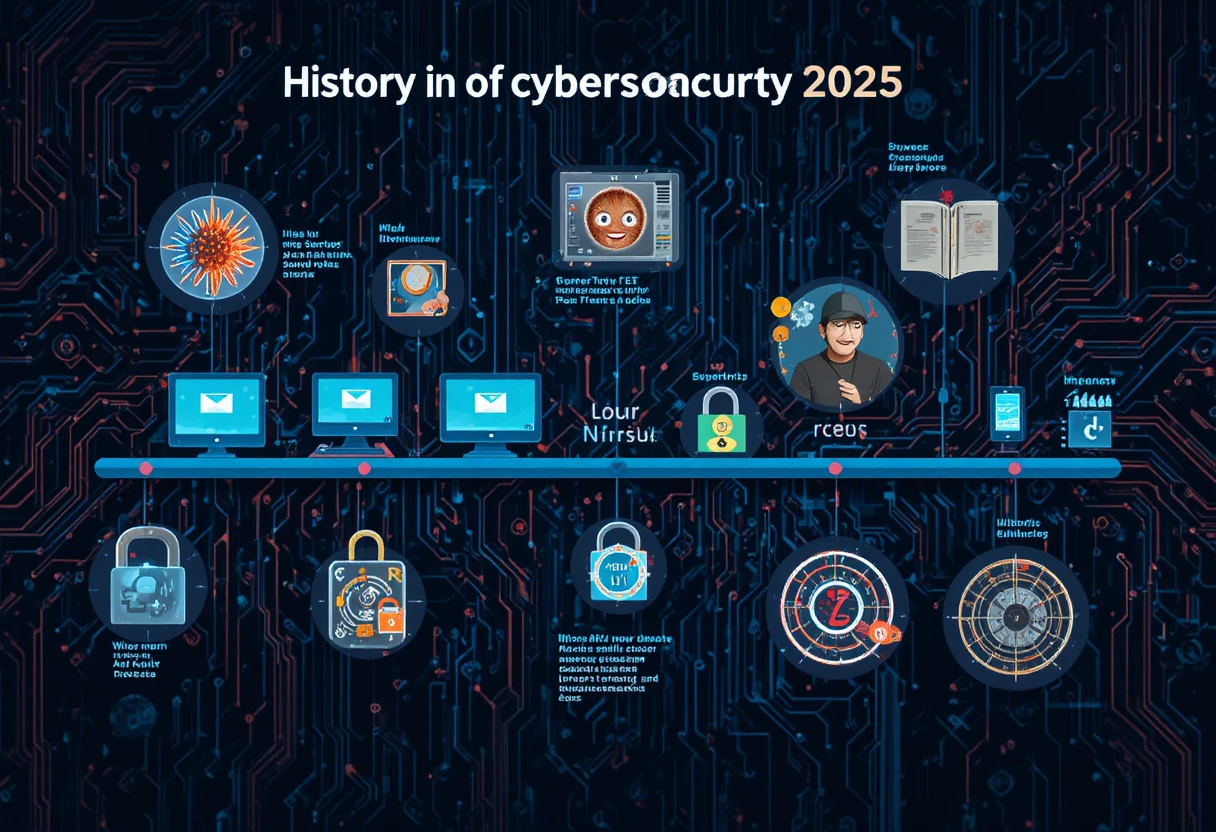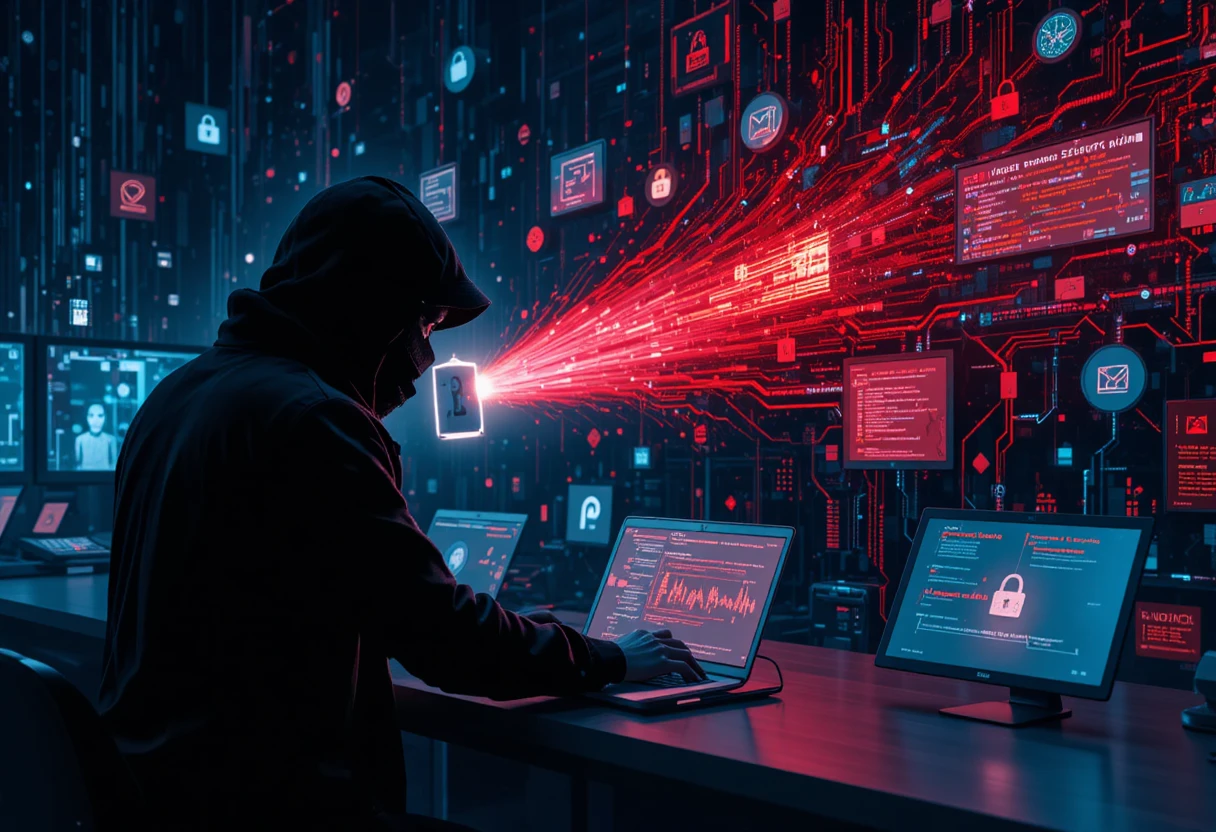Cybersecurity has become the bedrock of our increasingly interconnected society, protecting individuals, organizations, and nations from digital threats that evolve at breakneck speed. As of October 2025, with global cybercrime costs projected to reach $10.5 trillion annually, the field encompasses technologies, strategies, and policies aimed at defending against unauthorized access, data breaches, and malicious activities. From safeguarding personal information to securing critical infrastructure, cybersecurity is no longer a niche concern but a universal imperative. This 3000-word post explores the history, key technologies, current threats, best practices, the role of AI, and future trends in cybersecurity, offering a comprehensive overview for readers navigating this complex landscape.
Introduction to Cybersecurity
Cybersecurity refers to the practice of protecting systems, networks, and data from digital attacks. These attacks can range from phishing scams targeting individuals to sophisticated ransomware operations crippling entire organizations. In 2025, the digital ecosystem is more vulnerable than ever, with the proliferation of IoT devices, cloud computing, and AI amplifying both opportunities and risks.
Why Cybersecurity Matters Today
The stakes are high: a single breach can lead to financial losses, reputational damage, and even threats to national security. For instance, the World Economic Forum’s Global Cybersecurity Outlook 2025 highlights growing cyber inequity, where large organizations invest heavily in defenses while smaller ones lag behind, creating systemic vulnerabilities. Individuals face risks like identity theft, while businesses contend with supply chain attacks and geopolitical cyber warfare. Governments are stepping up with regulations, but the human element—such as employee errors—remains a weak link.
The Scope of Cybersecurity
Cybersecurity spans multiple domains: network security, endpoint protection, cloud security, and more. It involves proactive measures like threat intelligence and reactive ones like incident response. As we delve deeper, we’ll uncover how this field has evolved and where it’s headed.
The History of Cybersecurity
The roots of cybersecurity trace back to the early days of computing, long before the internet became ubiquitous. In the 1940s, virus theory emerged as mathematicians like John von Neumann conceptualized self-replicating programs. However, practical cybersecurity began in the 1960s with the ARPANET, the precursor to the internet, where concerns about unauthorized access first arose.
Early Milestones: 1970s to 1980s
In 1971, Bob Thomas created the Creeper program, a harmless self-replicating code that moved across ARPANET, marking the first “virus.” This led to the development of Reaper, the first antivirus software, in 1972. The 1980s saw the term “cybersecurity” coined by William Gibson in his 1983 novel Neuromancer, while real-world threats emerged with the 1986 U.S. Computer Fraud and Abuse Act addressing hacking. The 1987 Vienna virus and 1988 Morris Worm, which disrupted 10% of the internet, highlighted the need for robust defenses.
The Internet Era: 1990s to 2000s
The 1990s brought widespread internet adoption, accompanied by threats like the ILOVEYOU worm in 2000, which caused $10 billion in damages. Firewalls and antivirus programs became standard. The 2004 discovery of Cabir, the first mobile malware, expanded the threat landscape to smartphones. By the mid-2000s, spyware and ransomware originated, with attacks like the 2007 Estonia cyberwar demonstrating state-sponsored threats.
Modern Developments: 2010s to 2025
The 2010s saw massive breaches, such as the 2017 Equifax hack exposing 147 million records. Regulations like GDPR (2018) enforced data protection. In the 2020s, the COVID-19 pandemic accelerated digital transformation, leading to a surge in attacks. By 2025, AI-driven threats and quantum computing risks dominate, as noted in NIST’s cybersecurity timeline. This evolution underscores cybersecurity’s shift from reactive antivirus to proactive, intelligence-driven strategies.

Key Technologies in Cybersecurity
Cybersecurity relies on a suite of technologies to detect, prevent, and respond to threats. In 2025, these tools are more advanced, integrating AI and automation for efficiency.
Encryption and Data Protection
Encryption scrambles data to make it unreadable without a key, essential for protecting sensitive information in transit and at rest. Technologies like AES-256 are standard, while homomorphic encryption allows computations on encrypted data without decryption. Quantum-resistant algorithms are emerging to counter future quantum threats.
Firewalls and Intrusion Detection Systems
Next-generation firewalls (NGFWs) use deep packet inspection to block malicious traffic. Intrusion Detection Systems (IDS) and Intrusion Prevention Systems (IPS) monitor networks for anomalies, alerting or blocking threats in real-time. In 2025, these integrate with AI for predictive analysis.
Endpoint Detection and Response (EDR)
EDR tools like those from CrowdStrike monitor devices for suspicious behavior, enabling rapid response. With remote work prevalent, EDR is crucial for securing endpoints beyond traditional perimeters.
Zero Trust Architecture
Zero Trust assumes no entity is trustworthy by default, requiring continuous verification. Adopted widely in 2025, it segments networks and uses micro-segmentation to limit breach impacts.
Cloud Security Tools
As cloud adoption soars, tools like Cloud Access Security Brokers (CASBs) and Secure Access Service Edge (SASE) protect hybrid environments. These ensure compliance and visibility across multi-cloud setups.
Current Threats and Vulnerabilities in 2025
October 2025 has seen a spike in sophisticated attacks, including the F5 BIG-IP hack exposing over 266,000 instances to remote exploits. Ransomware remains rampant, with tactics evolving through Ransomware-as-a-Service (RaaS) models.
Ransomware and Supply Chain Attacks
Ransomware actors target edge devices and cloud infrastructures, as per Check Point’s 2025 report. The Jaguar Land Rover attack in October halted operations, exemplifying industrial disruptions. Supply chain vulnerabilities, like those in F5, amplify risks.
AI-Powered Threats
AI-driven malware and deepfakes are surging. Deepfakes manipulate videos for social engineering, while AI agents automate attacks. Ukraine aid groups faced fake Zoom meetings with weaponized PDFs.
Zero-Day Exploits and Phishing
Microsoft’s October Patch Tuesday fixed three zero-days, including CVE-2025-59230. Phishing evolves with AI-generated content, exploiting human trust.
Geopolitical and Infostealer Threats
Nation-state attacks and infostealers target sensitive data, with recent breaches at Verisure. The White House’s National Cybersecurity Awareness Month proclamation emphasizes these risks.

Best Practices for Individuals and Organizations
Adopting best practices is essential to mitigate risks. CISA recommends preventative measures for all.
For Individuals
Use strong, unique passwords and enable multi-factor authentication (MFA). Avoid suspicious emails and keep software updated. Limit sharing personal info online and use antivirus software. Mobile precautions include secure apps and avoiding public Wi-Fi for sensitive tasks.
For Organizations
Implement people-first strategies, including employee training on phishing. Use endpoint protection, access management, and data backups. Adopt Zero Trust and regular audits. Secure networks with firewalls and encrypt data. For small businesses, FCC advises basic principles like antivirus and secure file-sharing.
Emerging Practices
Incorporate AI for threat detection and foster a culture of security awareness.
The Role of AI in Cybersecurity
AI is a double-edged sword in cybersecurity, empowering both attackers and defenders. In 2025, AI enhances threat detection by analyzing vast datasets in real-time.
AI for Defense
AI automates repetitive tasks like malware analysis and anomaly detection. Tools from MixMode and Darktrace use AI for efficient prevention and response, with 95% of experts agreeing it improves speed. AI agents boost defenses amid tightening budgets.
AI as a Threat
Attackers use AI for sophisticated malware and deepfakes. The G7 emphasizes risk-managed AI systems. Securing AI itself is crucial to prevent exploitation.
Ethical and Workforce Implications
AI revolutionizes response but requires ethical frameworks. Workforce development focuses on AI literacy.
Future Trends in Cybersecurity Beyond 2025
Beyond 2025, cybersecurity will grapple with quantum threats and AI escalation. Costs could hit $15.63 trillion by 2029.
Quantum Computing and Post-Quantum Cryptography
Quantum computers will break current encryption, necessitating quantum-resistant algorithms. By 2030, widespread adoption is expected.
AI and Automation Dominance
AI will shape battles, with defenders securing AI systems. Shadow AI and identity strategies will prevail.
Workforce and Skills Evolution
Focus on durable skills over degrees, addressing shortages. Geopolitical cyber warfare and API attacks will rise.
Regulatory and Ethical Shifts
Privacy balancing and global frameworks will emerge. The future demands adaptability.

Conclusion
Cybersecurity in 2025 is a dynamic field, blending historical lessons with cutting-edge tech to combat evolving threats. From encryption to AI-driven defenses, the tools are powerful, but success hinges on best practices and vigilance. As we look beyond 2025, embracing quantum resilience and ethical AI will be key to a secure digital future. Staying informed and proactive is essential—after all, in cybersecurity, prevention is always better than cure.